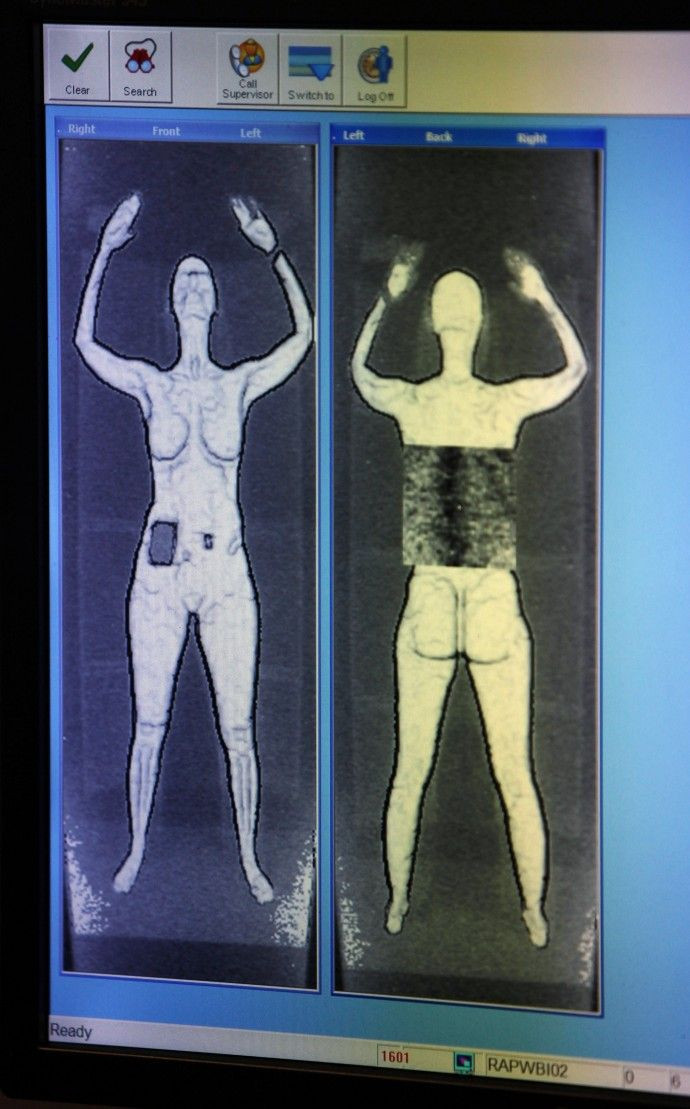Johns Hopkins Unhappy With TSA Shout Out

The Transportation Security Administration is referencing a Johns Hopkins study on its web site, saying that the full-body x-ray scanners are safe to use. But Johns Hopkins is unhappy with the way that study is being used.
There are two types of full-body scanner being used by the TSA. One uses millimeter wavelength radio waves (about 24-30 gigahertz). The other uses x-rays, and it is those that have raised health concerns.
The TSA's web site says: Advanced imaging technology screening is safe for all passengers, including children, pregnant women, and individuals with medical implants. The TSA references a study by Johns Hopkins University's Applied Radiation Lab and notes the radiation dosages are below the limits set by the American National Standards Institute, and says that they are therefore safe.
But Johns Hopkins says that its study only demonstrates that the radiation dosage is under the limit set by ANSI. A spokeswoman for Johns Hopkins said the people who did the testing were unhappy with the way the TSA characterized the study. The safety of the machines is a somewhat different question, she said.
That doesn't mean they aren't safe. Kelley Classic, spokeswoman for the Health Physics Society, notes that the ANSI dosage levels were set to keep exposure to a minimum, and while they weren't geared to the most vulnerable populations they are relatively safe for most people. As the exposure is less it should be safe even for pregnant women, she said.
According to the studies referenced by the TSA, the radiation dosage from an X-ray machine used in screening is 0.25 microsieverts per scan. A sievert is a unit of radiation exposure for biological tissue. A typical chest x-ray exposes a patient to 0.06 millisieverts, or 240 times as much.
But there is still the risk of malfunctioning equipment and whether the measured dosage matches what passengers might actually get.
A physicist at the University of Arizona, Peter Rez, published a paper estimating the actual radiation dose a person might get by looking at the resolution of the images that the TSA and others have released. If the size of the pixels is about 4 millimeters or greater, then the machine would be in compliance. If it is less than that, then the amount of radiation would creep up above the ANSI standard. Rez said in an email that even if the radiation levels are higher than those cited by the TSA, they are quite small and the additional risk of cancer is so tiny as to be undetectable.
The real concern is malfunctioning equipment, which given the large number of people being scanned and the number of scanners is bound to happen sooner or later, he says in his study. For example, a machine that gets stuck in the on position could subject someone to higher doses of radiation.
In an interview with MSNBC he noted that the risk of being in a terrorist attack is so small that any additional cancer risk from the scanners - which is also very tiny - is hardly worth it.
Full body x-ray scans use lower-power radiation that is preferentially scattered by lighter elements. In the backscatter machine, the x-rays don't just shoot through the material they hit because they are emitted with less energy than in a hospital setting. Instead of passing through the target, they are scattered differently by different elements.
The lighter the element the more scattering there is. Since humans are made up of mostly water - hydrogen and oxygen - those elements scatter the x-rays strongly and show a high-quality image. Explosives are mostly carbon and nitrogen, so they also show up.
In a hospital or dentist's office, the x-rays pass through most materials and are stopped by dense tissue (such as bone or a tumor) or metal. That's why dental fillings and metal implants show up strongly, as bright white areas. The reason the TSA doesn't do this is that the radiation dose would be higher and the picture not sharp enough to really show the kinds of materials the TSA is seeking.
© Copyright IBTimes 2024. All rights reserved.





















